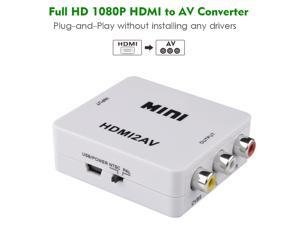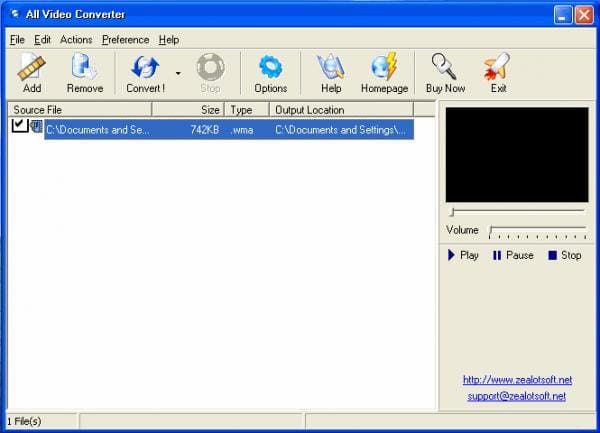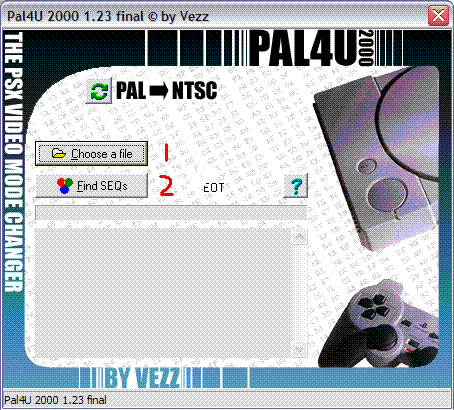Download Free Convert Ntsc To Pal Adobe Air
“Does NTSC/PAL matter to DVD movies?” - A Question from QuoraSince you are here, you may know that PAL and NTSC are different analog television systems used by different countries and regions. NTSC is used in most of North America, parts of South America (except Brazil, Argentina, and French Guiana), South Korea, Taiwan, Japan, etc.
While PAL is adopted by most countries in the world. Besides PAL and NTSC, SECAM is another system used mainly by France, East European and many western Africa countries.Most of us would not be able to recognize the difference between NTSC and PAL. But you'll find out that a PAL formatted DVD won't play on a NTSC DVD player, a PAL video is scrambled with black bars, and a European television set won't work in the United States. To fix these problems, you have to convert PAL to NSTC standard to watch videos on your TV. This article will show you how to convert PAL to NTSC compatible video or DVD with.Part 1.
How to Convert PAL Videos to NTSC By Changing Codecs. Note: Below guide takes the Windows screenshot for instance.
The steps for change PAL to NTSC for Mac is the same. Just make sure you get the right version.Step 1 Load PAL video or DVD to the converter.Launch the PAL to NTSC converter and go to the Convert section by default, click the Add Files or Load DVD menu on the top of the interface to load video files or DVD movies. The alternative way is dragging your source PAL video files to the program. This PAL to NTSC converter supports batch conversions. So you can drag more than one file to the program to convert PAL video to NTSC at one go.Step 2 Make NTSC changes.The main differences between PAL and NTSC video are the resolution and frame rate. NTSC has a resolution of 720x480 and a frame rate of 23.97.
So you need to make NTSC settings while selecting an output format for video.To select an output format, click the drop-down icon beside Convert all files to: and select the Video tab, and choose a format, then click the Edit icon to enter the Settings windows, and make settings as below:. Resolution: 720.480 pixels.
Frame Rate: 23.97 fpsConvert PAL to NTSC Tips: The program also provide you with all common video editing tools. If black bars are appear, you can simply crop the video to best fit your TV screen. Just click one of the Edit options beside the video thumbnail for these tools.Step 3 Start PAL to NTSC conversion.When the output format setting is finished, click the Convert All button at the bottom of the main interface, this PAL to NTSC converter will complete the conversion fast and easy. You can get the converted NTSC video by clicking the Output icon.
How to Convert PAL DVD to NTSC DVD and Vice VersaStep 1 Import PAL video or DVD to the converter.Launch Wondershare UniConverter and go to the Burn section by default, choose the Add Files or Load DVD button to import video files or DVD movies. The alternative way is drag and drop your source PAL videos to the program.Step 2 Set the DVD parameters and convert PAL to NTSC DVD.Here if the output format is set to DVD, there is no need to change resolution and frame rate settings. You'll have a TV Standard option to switch convert PAL DVD to NTSC DVD, or NTSC DVD to PAL DVD. You can also set the DVD label, Aspect Ratio, Quality, Menu Type as well. Meanwhile, you can choose the DVD destination at the Burn Video to:and choose and customize the DVD template by your needs.
Finally, click the Burn button to start converting PAL to NTSC DVD.When the PAL to NTSC conversion is complete, you can then play the output video files on your NTSC compatible DVD player and TV set. PAL vs NTSC DVDWhat Is PAL DVD Format?Standing for Phase Alternating Line, PAL is a video system or standard and a PAL DVD is a disc that makes use of the PAL encoding system. A DVD PAL format is used in more than 120 countries across the globe including Africa, Europe, Australia, and New Zealand. The different versions of this standard are these are inter operable. In a PAL format DVD 25 frames are transmitted in a second and each of these frames are made of 625 individual scan lines.What Is NTSC Format DVD?NTSC is also a video standard that is mainly used in North America and South America.
In this format, 30 frames per second are transmitted with aspect ratio of 720 X 480 and there are 525 individual scan lines in each of these frames. A disc using NTSC system is known as NTSC format DVD.Differences Between PAL Format DVD and NTSC Format DVDThough NTSC and PAL, both are encoding systems that affects the quality of the videos that are viewed, they are different an array of aspects including supported regions, aspect ratio, fps, and others. The table below shows comparison between NTSC and PAL format.Features/FormatNTSCPALFull FormNational Television System CommitteePhase Alternating LineSupported RegionsJapan, North America and most parts of South AmericaUK, Australia, Sweden, most parts of Europe and AfricaLines field525/60625/60Aspect Ratio720 X 480720 X 576Video Bandwidth4.2MHz5MHzSound Carrier4.5MHz5.5MHz.
Analog television encoding systems by nation; (green), (orange), and PAL (blue).Phase Alternating Line ( PAL) is a colour encoding system for used in broadcast television systems in most countries broadcasting at 625-line / 50 field (25 frame) per second. It was one of three major analogue colour television standards, the others being and.Almost all of the countries using PAL are currently in the, or have already converted standards to, or.This page primarily discusses the PAL colour encoding system.

The articles on and analogue television further describe frame rates, image resolution and audio modulation. Oscillogram of composite PAL signal—two lines.The 4.43361875 MHz frequency of the colour carrier is a result of 283.75 colour clock cycles per line plus a 25 Hz offset to avoid interferences. Since the line frequency (number of lines per second) is 15625 Hz (625 lines × 50 Hz ÷ 2), the colour calculates as follows: 4.43361875 MHz = 283.75 × 15625 Hz + 25 Hz.The frequency 50 Hz is the optional refresh frequency of the monitor to be able to create an illusion of motion, while 625 lines means the vertical lines or resolution that the PAL system supports.The original colour is required by the colour decoder to recreate the signals. Since the carrier is not transmitted with the video information it has to be generated locally in the receiver. In order that the of this locally generated signal can match the transmitted information, a 10 cycle burst of colour is added to the video signal shortly after the line sync pulse, but before the picture information, during the so-called. This colour burst is not actually in phase with the original colour subcarrier, but leads it by 45 degrees on the odd lines and lags it by 45 degrees on the even lines.
This enables the colour decoder circuitry to distinguish the phase of the R-Y vector which reverses every line.PAL vs. NTSC PAL usually has 576 visible lines compared with 486 lines with, meaning that PAL has a 20% higher resolution, in fact it even has a higher resolution than Enhanced Definition standard (854x486). Most TV output for PAL and NTSC use interlaced frames meaning that even lines update on one field and odd lines update on the next field. Interlacing frames gives a smoother motion with half the frame rate. Is used with a of or whereas PAL generally uses or; both use a high enough to give the illusion of fluid motion. This is due to the fact that NTSC is generally used in countries with a of 60 Hz and PAL in countries with 50 Hz, although there are many exceptions. Both PAL and NTSC have a higher frame rate than film which uses 24 frames per second.
PAL has a closer frame rate to that of film, so most films are sped up 4% to play on PAL systems, shortening the runtime of the film and, without adjustment, slightly raising the pitch of the audio track. Film conversions for NTSC instead use to spread the 24 frames of film across 60 interlaced fields. This maintains the runtime of the film and preserves the original audio, but may cause worse interlacing artefacts during fast motion.NTSC receivers have a to perform colour correction manually. If this is not adjusted correctly, the colours may be faulty. The PAL standard automatically cancels errors by phase reversal, so a tint control is unnecessary yet Saturation control can be more useful. Chrominance phase errors in the PAL system are cancelled out using a 1H delay line resulting in lower saturation, which is much less noticeable to the eye than NTSC hue errors.However, the alternation of colour information——can lead to picture grain on pictures with extreme phase errors even in PAL systems, if decoder circuits are misaligned or use the simplified decoders of early designs (typically to overcome royalty restrictions).
In most cases such extreme phase shifts do not occur. This effect will usually be observed when the transmission path is poor, typically in built up areas or where the terrain is unfavourable.
The effect is more noticeable on UHF than VHF signals as VHF signals tend to be more robust.In the early 1970s some Japanese set manufacturers developed decoding systems to avoid paying royalties to. The Telefunken licence covered any decoding method that relied on the alternating subcarrier phase to reduce phase errors. This included very basic PAL decoders that relied on the human eye to average out the odd/even line phase errors. One solution was to use a 1H to allow decoding of only the odd or even lines. For example, the chrominance on odd lines would be switched directly through to the decoder and also be stored in the delay line. Then, on even lines, the stored odd line would be decoded again.
This method effectively converted PAL to NTSC. Such systems suffered hue errors and other problems inherent in NTSC and required the addition of a manual control.PAL and NTSC have slightly divergent, but the colour decoder differences here are ignored.PAL vs. SECAM The patents predate those of PAL by several years (1956 vs 1962). Main article:In Brazil, PAL is used in conjunction with the 525 line, 59.94 field/s system M, using (very nearly) the NTSC colour subcarrier frequency.
Exact colour subcarrier frequency of PAL-M is 3.575611 MHz. Almost all other countries using system M use NTSC.The PAL colour system (either baseband or with any RF system, with the normal 4.43 MHz subcarrier unlike PAL-M) can also be applied to an NTSC-like 525-line picture to form what is often known as 'PAL-60' (sometimes 'PAL-60/525', 'Quasi-PAL' or 'Pseudo PAL').
PAL-M (a broadcast standard) however should not be confused with 'PAL-60' (a video playback system—see below).PAL-N (Argentina, Paraguay and Uruguay) In Argentina, Paraguay and Uruguay the PAL-N variant is used. It employs the 625 line/50 field per second waveform of PAL-B/G, D/K, H, and I, but on a 6 MHz channel with a chrominance subcarrier frequency of 3.582056 MHz very similar to NTSC.PAL-N uses the colour space.VHS tapes recorded from a PAL-N or a PAL-B/G, D/K, H, or I broadcast are indistinguishable because the downconverted subcarrier on the tape is the same. A VHS recorded off TV (or released) in Europe will play in colour on any PAL-N VCR and PAL-N TV in Argentina, Paraguay and Uruguay. Likewise, any tape recorded in Argentina, Paraguay or Uruguay off a PAL-N TV broadcast can be sent to anyone in European countries that use PAL (and Australia/New Zealand, etc.) and it will display in colour. This will also play back successfully in Russia and other SECAM countries, as the USSR mandated PAL compatibility in 1985—this has proved to be very convenient for video collectors.People in Argentina, Paraguay and Uruguay usually own TV sets that also display NTSC-M, in addition to PAL-N. Also conveniently broadcasts in NTSC-M for North, Central, and South America.
The standard that defines the PAL system was last published by the in 1998 and has the title. The CCIR, the standards and the TV sets’ market in France (section III.1). 'Les Videodisques', Georges Broussaud (head/member of development team), editions Masson. Archived from on 22 April 2009.
090426 dvd-replica.com. ^ (PDF). Archived from (PDF) on 29 May 2009.
090426 pembers.freeserve.co.uk. ^ (PDF).
090426 deetc.isel.ipl.pt page 52. (PDF).
090426 thomsongrassvalley.com. (PDF). Archived from (PDF) on 28 April 2016.
Ntsc To Pal Converter

Retrieved 3 September 2015. (PDF).
Retrieved 11 September 2010. Retrieved 29 June 2019. ^ Michael Hegarty; Anne Phelan; Lisa Kilbride (1 January 1998). Leuven University Press.
Pp. 260–. ^. Archived from on 21 February 2016.

Retrieved 9 December 2017. CS1 maint: archived copy as title.
External links Wikimedia Commons has media related to.